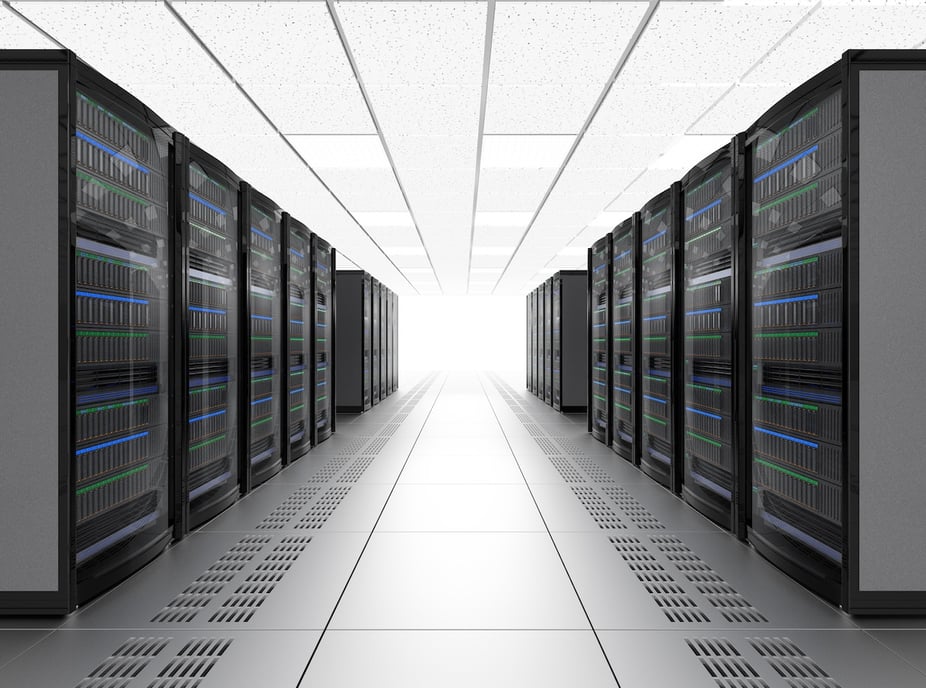
Data center servers are the powerhouses that support the world’s computing needs—needs that are ever-increasing. As new data centers are built and existing facilities expand or upgrade their systems, it’s helpful to know how long servers are meant to last. In this post, we’ll look at the average lifespan of a data center server and the factors that can influence when it’s time for a replacement.
.
What Is a Data Center Server?
Data center servers are powerful computers used to store data and run applications. Servers are made of many components, including a motherboard, processor, memory and more. In a data center context, you may also hear servers referred to as “IT racks” or “IT cabinets.” That’s because servers are typically contained in cabinet-like enclosures along with other essential IT equipment, such as routers and switches.
Learn how IT racks fit into the bigger picture in our interactive infographic, The Anatomy of a Modular Data Center.
What Is the Average Lifespan of a Data Center Server?
Generally speaking, data center servers should be replaced every five years. However, that’s not always the case.
A 2020 survey asked data center managers and IT practitioners how frequently they replaced servers. A wide range of responses were recorded. The most popular answer (42 percent) was every 2-3 years. Just under a quarter of respondents said they replace servers the standard 4-5 years, and just over a quarter said they replace servers every year. Only 8 percent said they would wait six years or more to refresh their IT equipment.
You’ll see a lot of different answers to the question of how long a data center server lasts because the actual lifespan of a server depends on a few factors.
What Can Affect Data Center Server Lifespan?
The factors that tend to impact server lifespan the most include a server’s design, usage, maintenance, and environmental conditions.
Design
Not all servers are created equal—some may be designed to last longer than others.
As with all technology, servers become more sophisticated and capable with each innovative design, so newer servers may be capable of lasting longer than previous models. For instance, Microsoft recently expanded its cloud server lifespan from four to six years.
Usage
Even if a server is rated to last longer, it may need to be replaced sooner depending on how it’s used. Usage is the biggest factor in determining a server’s functional lifespan. Generally, the more data they process, the more wear and tear servers experience.
Maintenance
Servers are inevitably subject to wear, but you can counteract this wear through proactive maintenance. Properly maintaining servers and replacing internal components that wear out can extend the life of IT equipment.
Environmental Conditions
The environment servers operate in can also have an impact. This is why it’s crucial to have a climate-controlled environment with the help of cooling systems and air filtration systems.
When It’s Time for an Upgrade
Sometimes, it’s obvious that a server needs to be replaced, but many data centers today are opting to upgrade their IT equipment before it quits functioning. For one, this allows for a more planned transition with seamless uptime. Another reason to upgrade functional IT equipment is in order to take advantage of the elevated capabilities of newer systems. Keep in mind that newer systems offer higher power densities, which may necessitate upgrades to cooling infrastructure as well.
Whether to capitalize on the latest and greatest tech or to replace aging equipment, changing out data center servers should involve a careful look at the rest of your data center to make the most of the upgrade. When you need to overhaul your cooling system, PCX can outfit your data center with high-power modular systems that provide greater flexibility and help you future-proof your data center. Plus, these mechanical skids are quick and easy to deploy, so you can speed up your project and minimize disruption to ongoing operations.
Want to learn more about keeping your upgraded data center cool? Check out our e-book, The Complete Guide to Data Center Cooling.



Comments